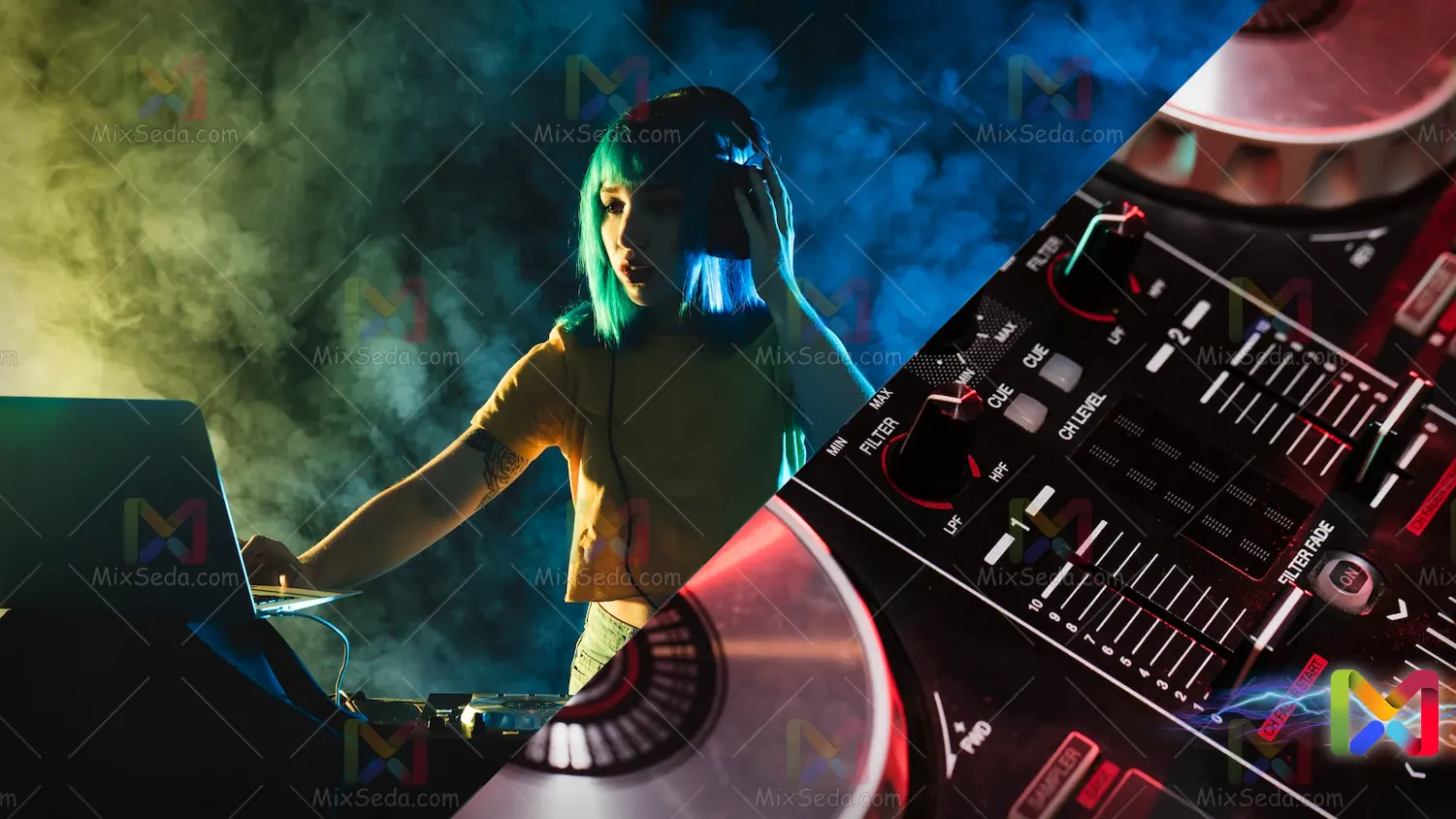
introduction
Some DJs use these mixers to play music seamlessly in places where music is played. In hip hop, they try to remix songs and create new songs and sounds using these mixers and the players attached to them.
DJs who work in nightclubs and electronic music productions try to change songs smoothly.
The sound source for these mixers can be a phonograph screen, a cassette, a CD or in the flash memory of today's world or laptops and tablets and ...
DJ mixers have a headphone output that allows the DJ to hear and adjust to the next track before the listener hears it. Many inexpensive DJ mixers have two channels, but more professional mixers can have four main input channels.
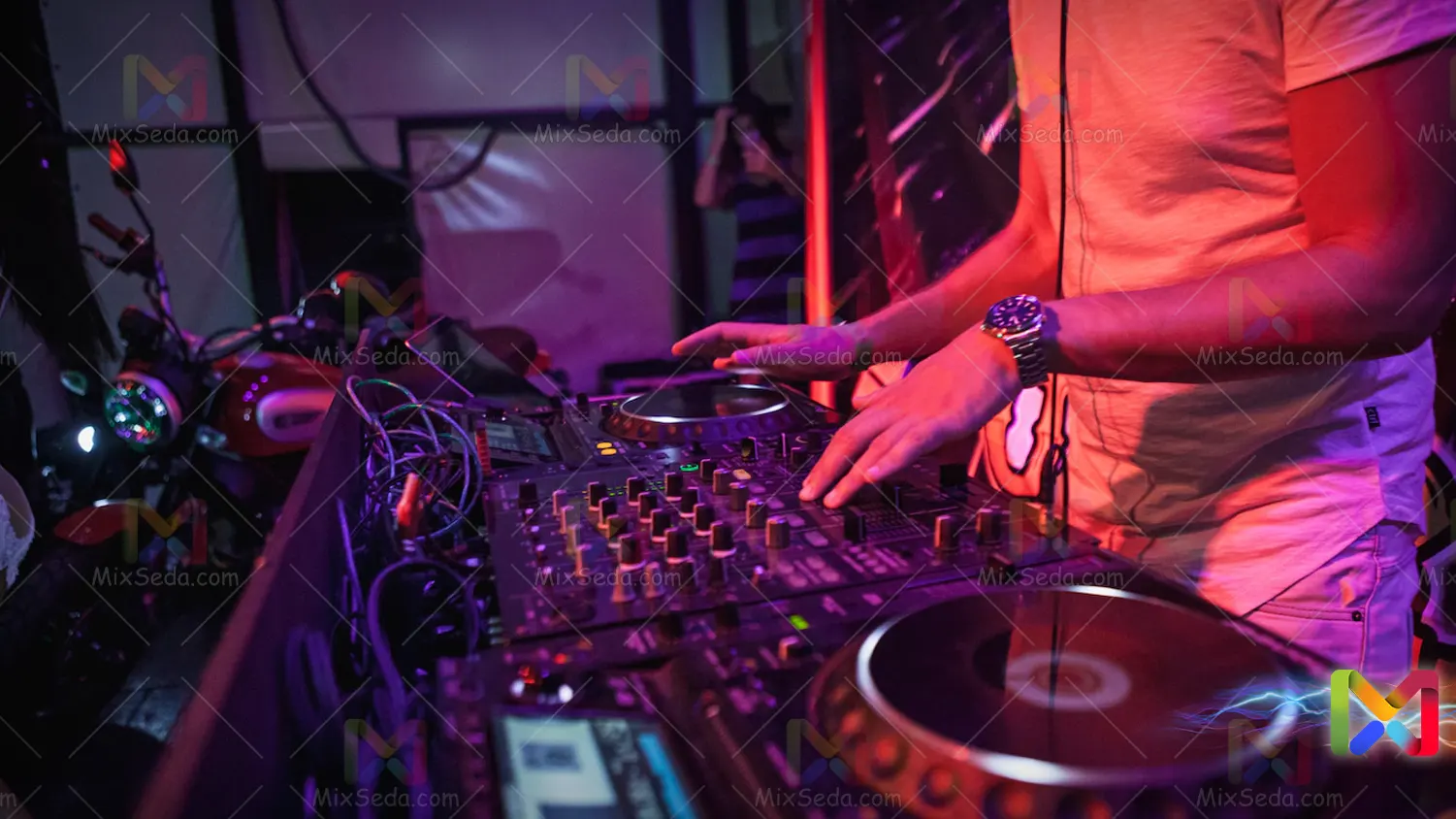
Differences with studio mixers
DJ mixers are much smaller than studio mixers or sound reinforcement systems. While an audio amplifier mixer can have up to 24 or more channels and studio mixers can have up to 96 input channels, DJ mixers typically have two to four main input channels.
Capacity
The key feature of these mixers is that the track sent to the channel can be sent to the headphones and listened to in the headphones while the feeder is closed and not playing in the main output. This is done by the cue button.
Each channel with this button activated will send its signal to the headphone output without depending on the channel power supply. Another key feature of these mixers is the cross feeder. A cross feeder is a horizontal feeder in which only the left channel sound is output when shifted to the left and only the right channel sound is shifted to the right.
Four-channel mixers have a select button for each channel, which can be set to go to section 1 or section 2 of each channel at the cross-feeder. If the cross feeder is in the middle, the sound from both channels is mixed and goes to the output.
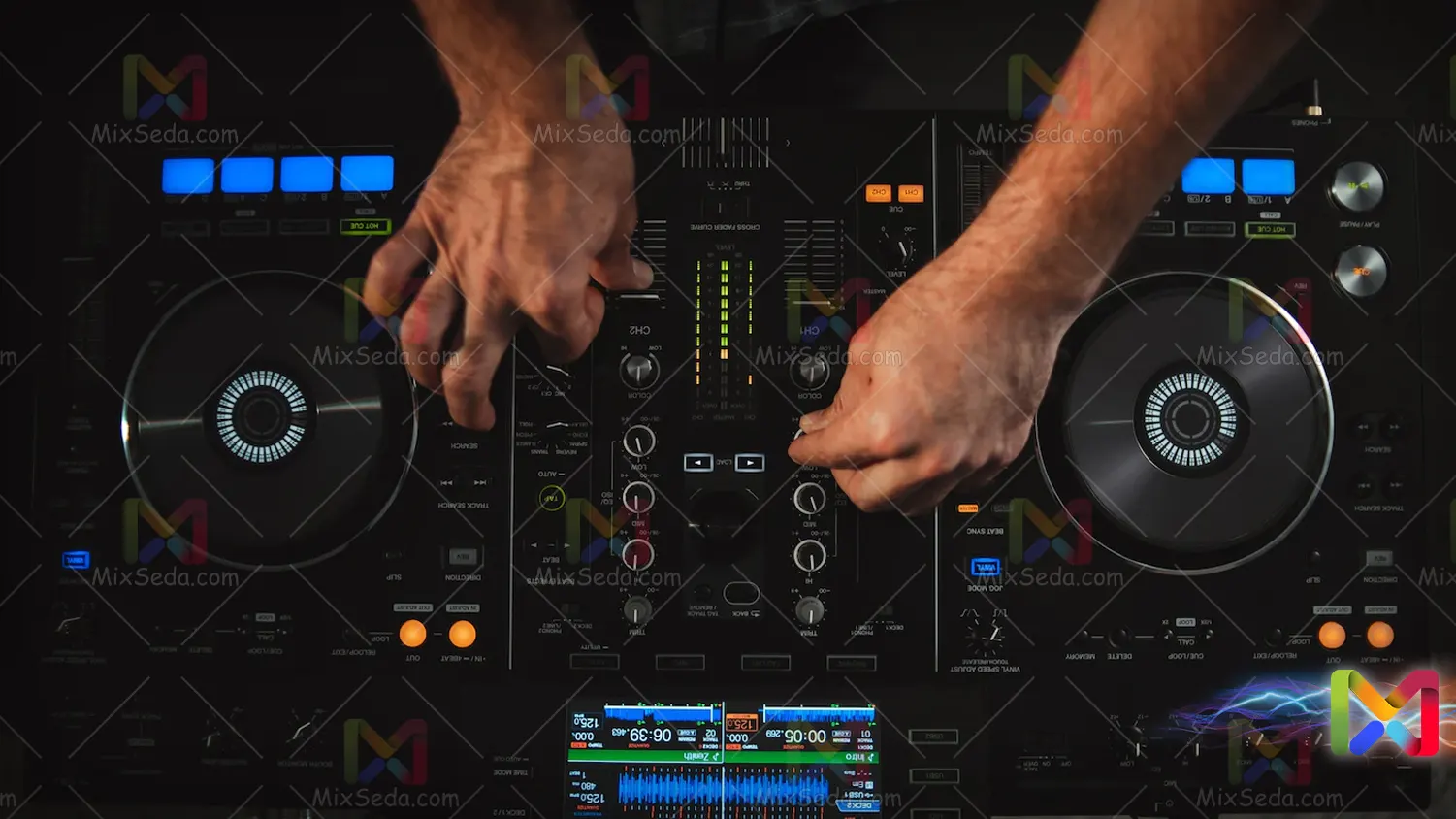
amplifier
Some DJ mixers, especially the more expensive professional ones and those for phonographs, have a phonograph preamp to hook the cymbals to themselves.
The signal received from the phonograph screens is very weak and cannot be sent to the amplifiers without amplification.
DJ mixers are also used for recording and remixing. The equalizers used in these mixers are generally three-band equalizers for each channel and use rotating volumes.
From 2010 onwards, effects can also be found on DJ mixers, which can be digital or electronic. Effects like Reverb, Echo and….
Some of these more expensive mixers also come with a USB sound card so they can be easily connected to computers. No additional sound card required.
DJ mixers usually also have a microphone input that allows DJs to speak announcements!
There is a key called kill which is present in some DJ mixers and its function is to cut a channel or frequency band from the equalizer.
The mixers also have sound level meters next to each channel and for the outputs, which show the signal strength in decibels.
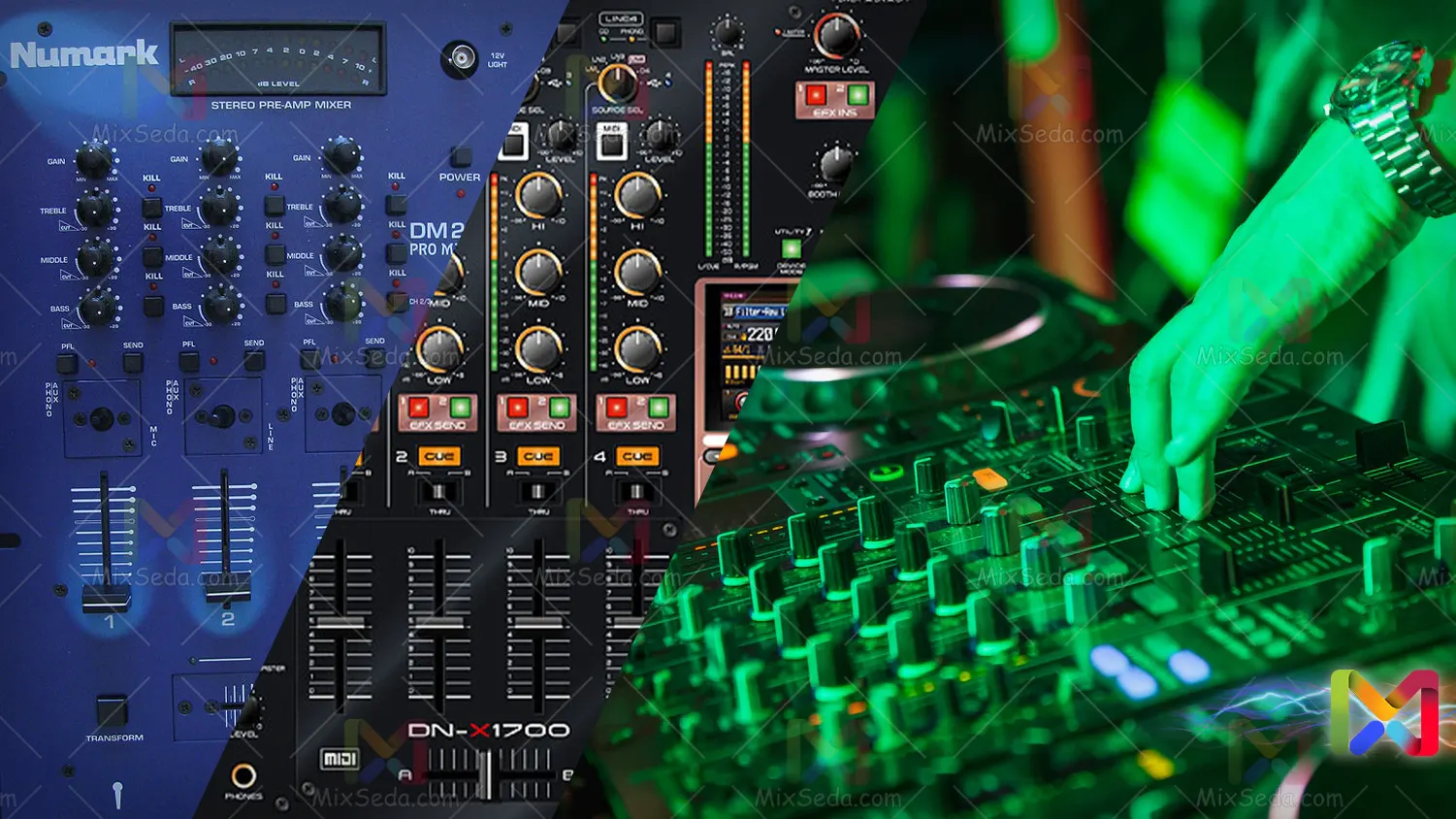
Production
The output of these mixers is usually connected to power amplifiers to amplify the signal and send it to the speakers.
If DJs are mixing on radio or TV stations, their mixer output is sent to the main mixer, which is used to broadcast radio waves.
If the DJ is recording a work in the studio, the output of his mixer is connected to the main mixer and then a signal is sent to the recorder, which can be a CD, a memory or a cassette.
In some cases, such as live performances that are also sent to the TV, the output of these mixers is connected to the main mixer to go to both the transmitter and the main amplifiers.
Some DJ mixers, in addition to headphones, also have a monitor speaker output that can directly monitor the sound playing in the system. (CABIN in the mixer below)
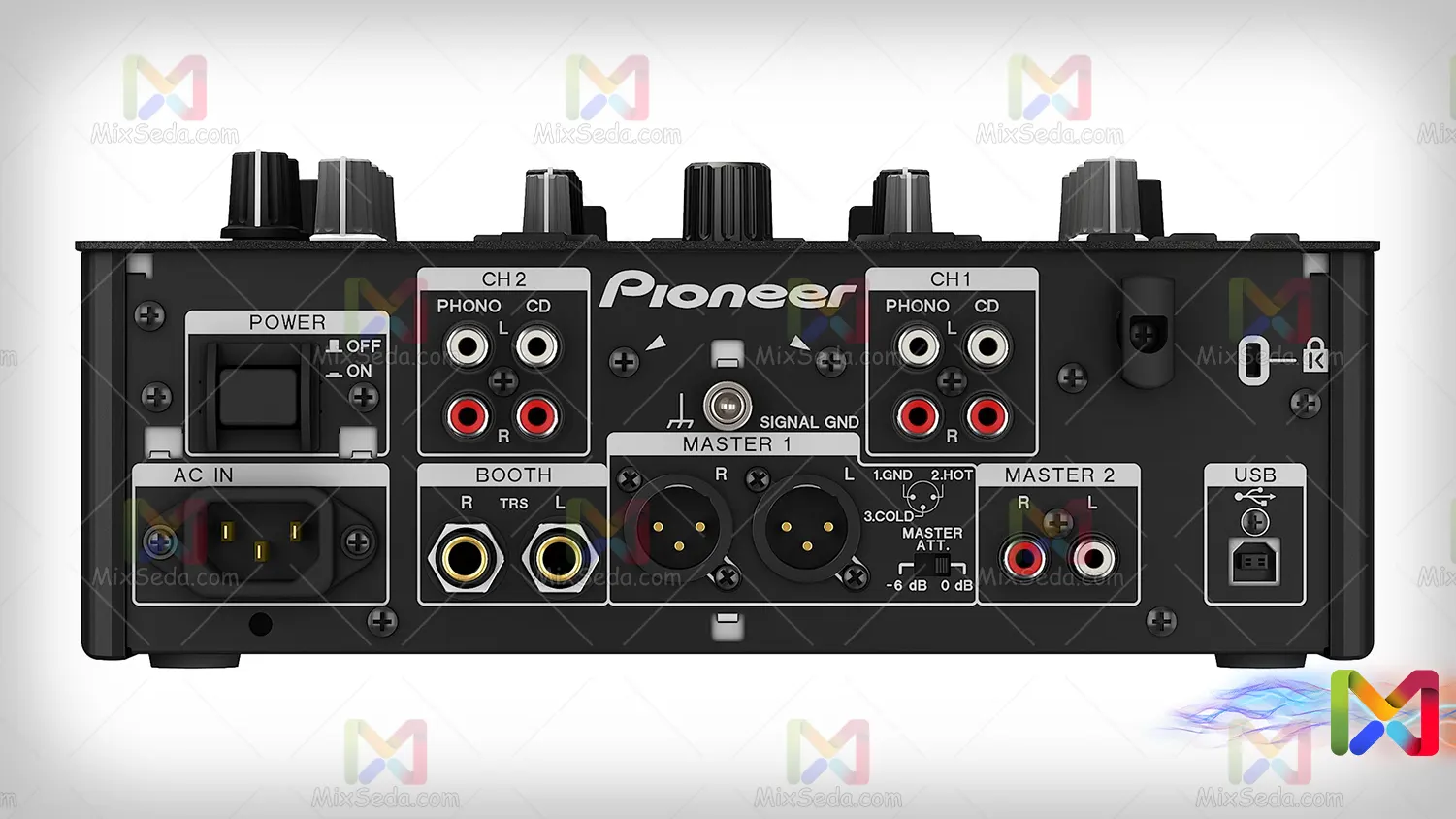
Source of power
These mixers are generally powered by alternating current, but some, built for portable work, can also run on batteries, the output of which is sent to an audio system that also runs on batteries.
